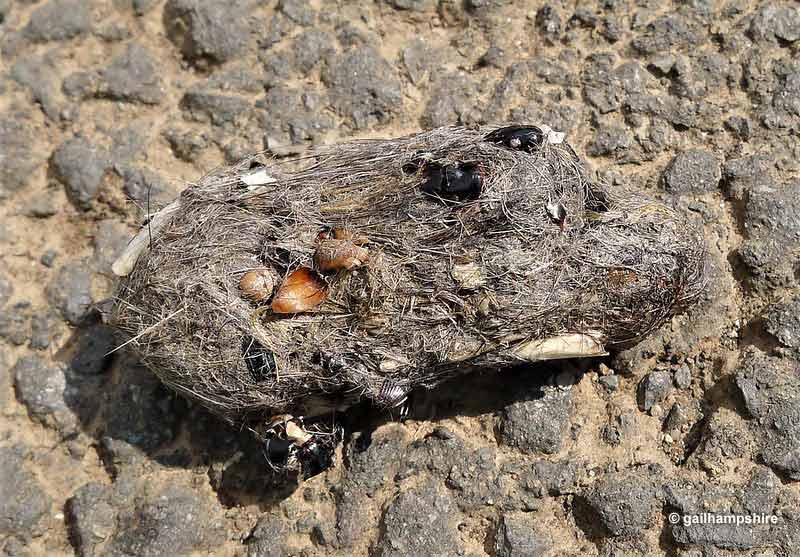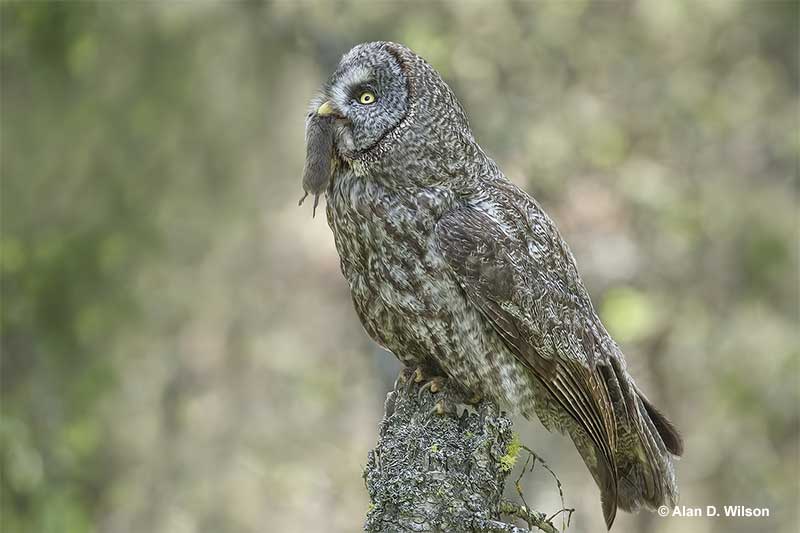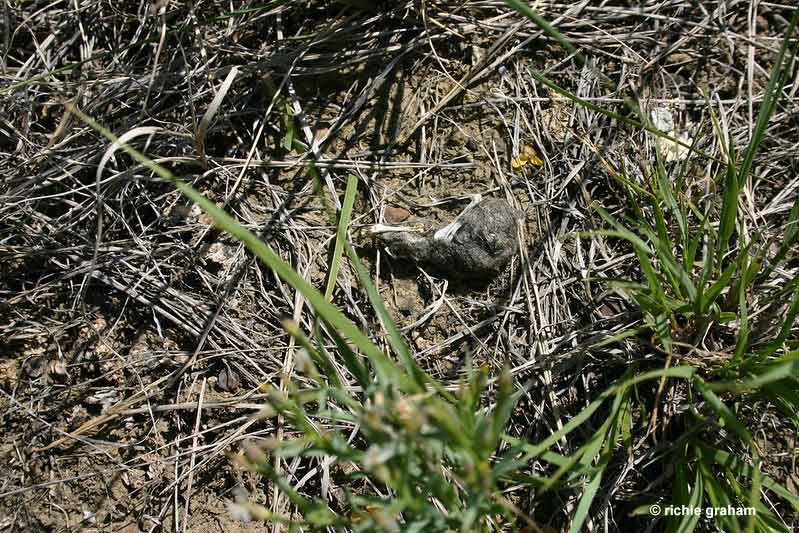
Owls are such unique birds. These nocturnal raptors fly with silent wings, help control rodent populations, and can rotate their heads 270 degrees!
These mysterious and beautiful predators also stand out in other ways. One of those interesting trademark behaviors is producing owl pellets.
Just what are owl pellets? Why and how often do owls make them?
On this page
Why Do Owls Excrete Pellets?
Owls are complete carnivores. Although some species feed on moths and other insects, most eat mammals and other small animals.
They also eat their prey in a distinctive fashion. When dining, owls aren’t picky. They seem to be more concerned about getting food into their stomach than worrying about tearing it into small, bite-size pieces.
After catching and killing a rodent, most owls simply swallow their prey whole! They don’t bother removing fur or bones. It’s a similar situation with the birds they catch. Although owls might tear off wings and other parts, the raptors still swallow most of those pieces whole, feathers included.

The only potential problem with such table manners is digesting all those hard animal parts. Basically, owls can’t digest the fur, bones, teeth, and feathers that they swallow. Since they would still rather swallow prey whole instead of removing all that fur and other parts of their prey, owls evolved an easy solution.
After eating prey, owls separate those indigestible parts inside their stomach and convert them into “owl pellets” made of fur, bits of bones and teeth, feathers, and hard insect parts. The undigested bits have an oval form so the bird can more easily expel them.
Puke or Feces?
Owl pellets aren’t puke nor feces. They are really in a category of their own. While yes, owls do cough them up from their stomach, we can’t really classify them as vomit. Since they don’t come out the other end, they aren’t feces, either.
Instead, these pellets are best categorized as bits of undigested parts that owls expel. They usually cough up one pellet per day and such pellets can accumulate below a nest or other frequently used perch.
Owls produce pellets during digestive processes that take place in two parts of their stomach. After swallowing a mouse or other prey whole, food passes into the first stomach chamber, or “proventriculus.” This is where all digestible food is liquified before moving on to the second stomach chamber, or gizzard.
This second part of the stomach is a strong muscular area that grinds down and compresses hard things like bones, teeth, and other hard bits of animals. During that process, it also pushes the liquified, digestible parts of their prey into their intestines.
However, the ground down fur and other hard parts don’t go any further. They stay in the gizzard where they become compacted into an oval form that the owl then coughs up and spits out.
Can You Tell Owl Pellets From Animal Poop?
Owls aren’t the only animals that leave evidence of their meals. While hiking or exploring natural areas, it’s pretty easy to find all sorts of animal droppings. Deer and other herbivores leave blackish, rounded droppings, but carnivores have scat that includes undigested parts of their prey.
Like owls, Coyotes, wild felines, and other mammals can’t break down fur and some other animal parts. While many mammals do remove fur and feathers before eating their prey, sometimes, they can swallow parts of their animal prey whole. Similar to owls, mammalian carnivores can also routinely eat bones.
However, instead of using a gizzard to grind down bones, mammals usually crush those hard parts by biting and chewing them. They become small bits of pulverized bone that can be further digested in their stomachs.
For this reason, although mammal scat might have bits of white crushed bone, it doesn’t usually have entire skulls or other bones. Owl pellets, on the other hand, often do have whole bones (skulls included!).
Related: Do owls eat cats?
Both mammal scat and owl pellets have hair and fur but differ in their shape. Compared to rounded owl pellets, mammals like foxes and cats produce scat that often looks narrower and has more tapered ends.
What About Other Birds?
Most birds of prey digest food similarly to owls, and ejecting undigested parts is a normal part of the process.
However, they don’t generate pellets as solid as the ones owls make.
Songbirds expel small bits of insect wings and other bits that they can’t digest, and frugivores like Robins often cough up small seeds. Kingfishers and herons cough up pellets that include fish scales and other undigested parts of their prey.
But what about raptors like hawks, eagles, and falcons? Since they eat some of the same foods that owls do, don’t they produce pellets like owls?
While these raptors do spit up pellets, they differ in some ways from owl pellets. Those differences are related to how owls and hawks eat. While owls swallow a lot of their prey whole, falcons and other diurnal raptors don’t.
Typically, hawks, falcons, and eagles remove feathers and fur so they can pick out and eat bits of meat. They end up eating much less fur, feathers, and bones and their pellets reflect this fact.
Although these birds of prey still spit up pellets, they also don’t do it as often as owls.
Frequently Asked Questions
What is another name for owl pellets?
Alternatively, owl pellets are called owl castings.
What’s the difference between owl pellets and owl poop?
The difference between owl pellets and owl poop is that owl pellets are a compact oval mass with fur and bone, while owl poop is a white liquid.
What is in an owl pellet?
Owl pellets consist of fur and other undigested remains of animals that an owl has eaten.
Why would you buy owl pellets?
Some people buy owl pellets for research. They use them to see which animals owls have eaten. You can pick them apart to find bones and other remains. However, to avoid germs, you should only work with sterilized owl pellets.
Do owl pellets smell?
Owl pellets do have an unpleasant smell when fresh or while being sterilized in an oven.


